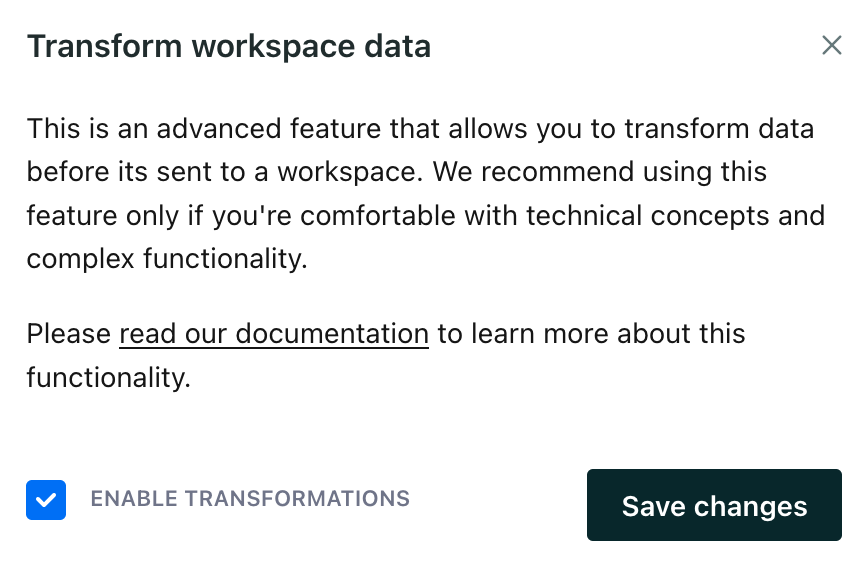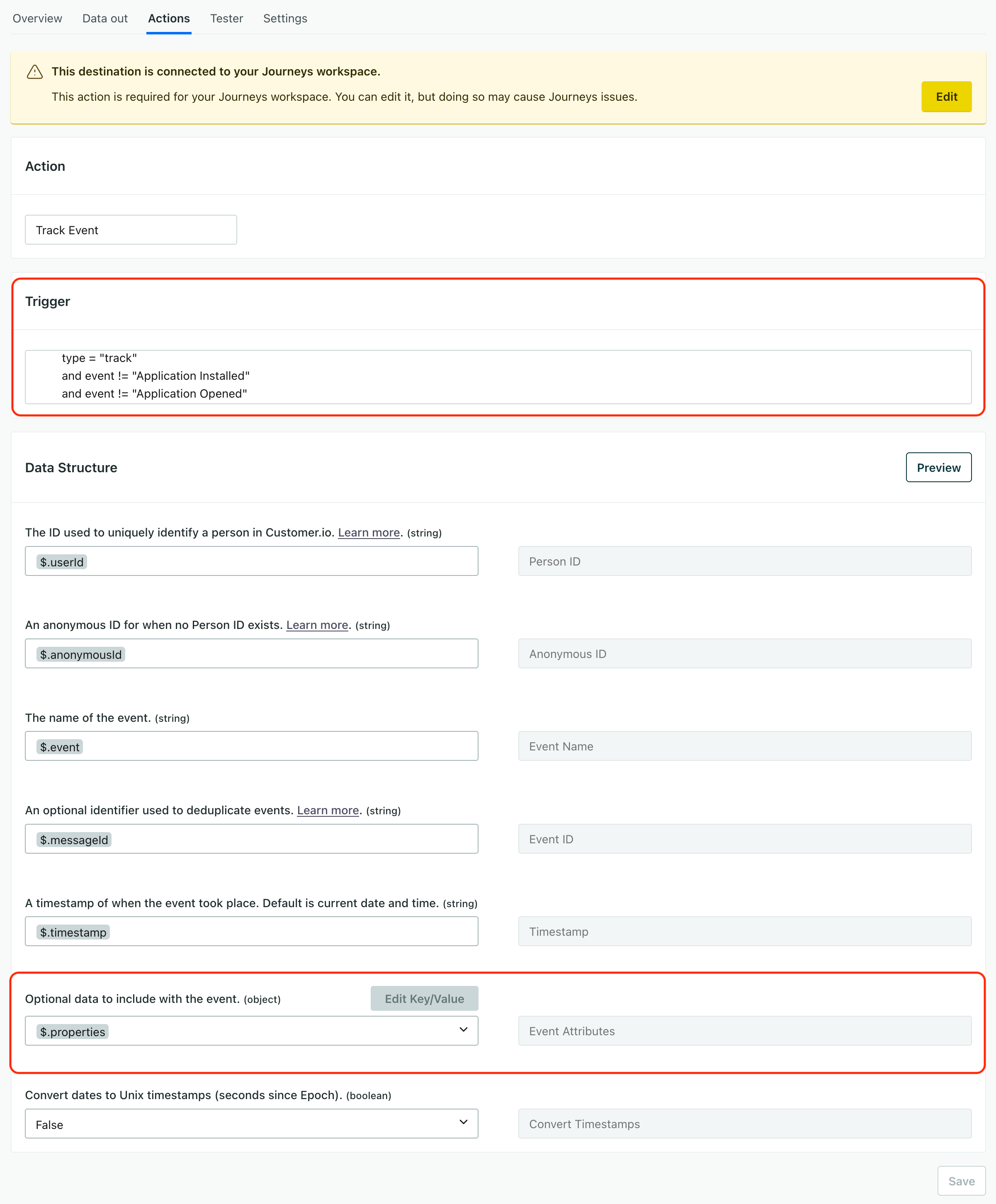Transform data to support data-out integrations
UpdatedTry using one of our SDKs or the Pipelines API instead
Changing actionsA block in a campaign workflow—like a message, delay, or attribute change. for data coming into Customer.io can be complex. If you’re just getting started, we suggest that you format your data based on our default actions and don’t change them.
These integrations are based on the Pipelines API already, and our libraries make it easier to understand and manage action mappings for destinations.
How it works
By default, we automatically map traffic from integrations based on our Track API to our newer Pipelines APIs to support downstream integrations—services outside of Customer.io. But, if you want more control over how we map incoming data to your workspace, you can edit your workspace’s actionsA block in a campaign workflow—like a message, delay, or attribute change..
Be careful: changing the default workspace mappings means you’re no longer processing data as explained in our documentation.
Track API Call)-->b{Are actions edited (Not recommended)"} b-->|no, process track
calls normally|c(Customer.io
processes call) c-->d(Transform to
Pipelines API) d-->e(Send traffic
to destinations) b-.->|"yes, transform
call first (advanced)"|h(Transform to
Pipelines API) h-.->i(Customer.io
processes call) i-.->e
Edit your workspace’s actions
Updating your workspace’s actions determines how we handle incoming data, including whether we process it at all. While you can change the default mappings, keep in mind that changing mappings affects the data that goes to your workspace!
- Go to Data & Integrations > Integrations.
- Hover over the icon in an integration that sends data to Customer.io and then select your workspace’s name.
- Go to the Actions tab.


- Click and click Edit to change an action.
- From here, you can edit or add actions—including filtering the calls that go to your workspace. For example, you may want to handle an event with a specific name differently from other events. When you edit an action, you can change:
- Trigger: the conditions that trigger the action. Common conditions include the
type(liketrackoridentify), theeventname, or an Event Property. - Data Structure: the transformations for data matching the trigger. In general, most changes are typically limited to the Optional Data section—additional properties or attributes you want to set when we receive an event or a call matching your trigger conditions.


- Trigger: the conditions that trigger the action. Common conditions include the
Review the default mappings
Before you change actions for your workspace, review our default mappings to understand how we translate incoming data to the newer format. Changing these mappings affects the way we process data in your workspace!

